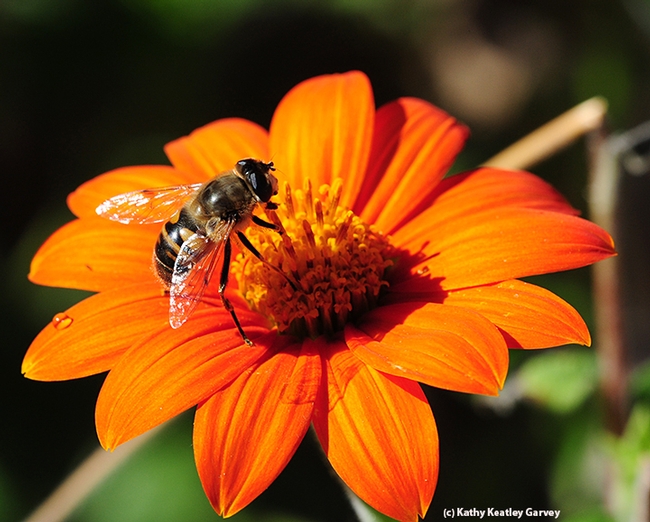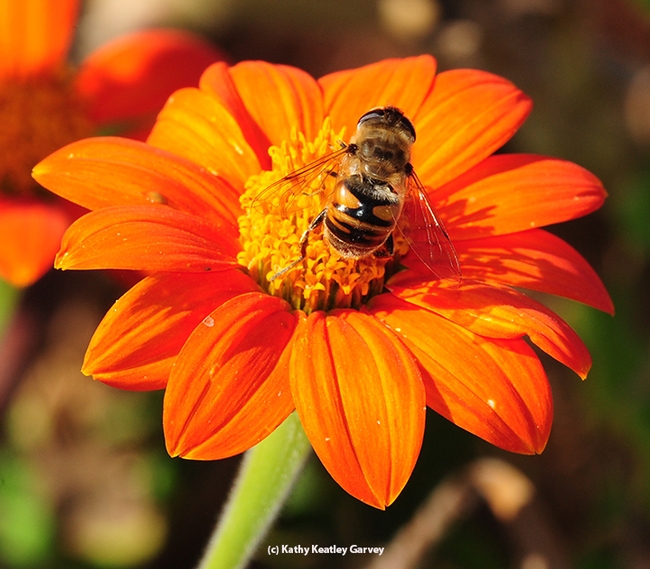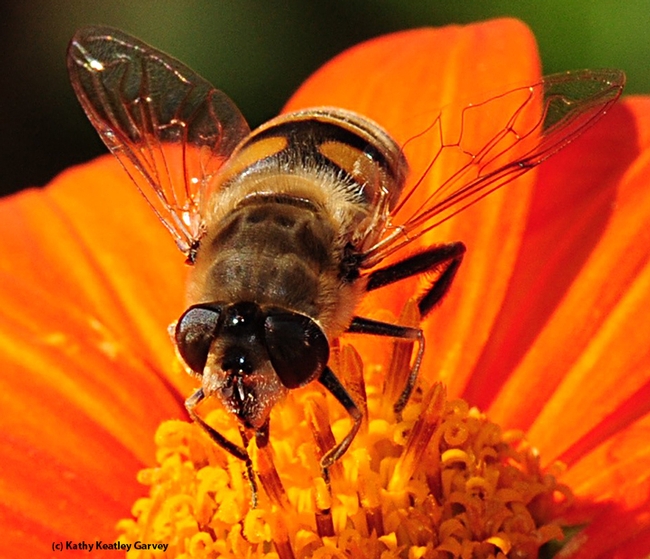Everyone's talking about the drones.
You know, the unmanned aerial vehicles (UAV). Those flying robots cruising over our heads--some with cameras for journalistic and research purposes and others with "need-to-know" purposes.
But in the entomological world, the word "drone" usually means a male honey bee. Or a fly. A drone fly.
To the untrained eye, the common drone fly (Eristalis tenax) looks somewhat like a honey bee, and flies somewhat like a honey bee. It feeds off pollen and nectar.
But the larva is known as a rattailed maggot and feeds off bacteria in drainage ditches, manure or cess pools, sewers and the like.
Like a worker honey bee, the adult drone fly is a pollinator and is often mistaken for a honey bee. Unlike a honey bee, however, it has one set of wings, large eyes, stubby antennae, and a distinguishing "H" on its abdomen.
Coming soon to a field near you--a drone (flying robot) and a drone fly (flying fly). Neither causes diseases nor sucks blood.
Attached Images:


